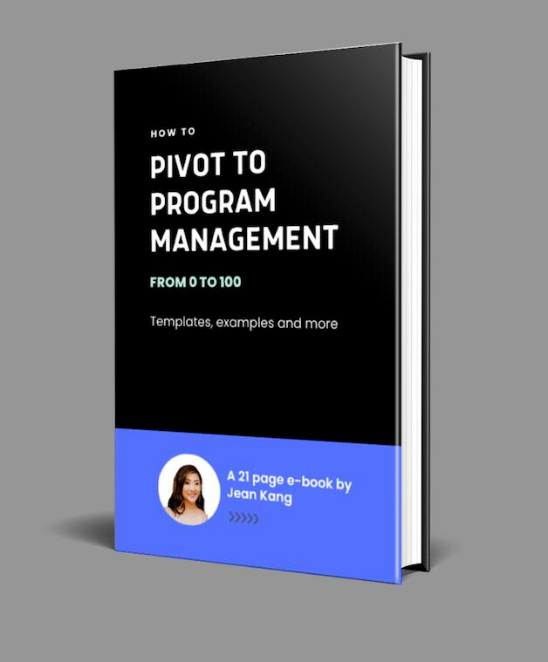Who writes meeting notes, two TPM personalities, a new TPM voice to follow
Welcome to 📮Monday TPM Field Dispatch 002 - Shortform thoughts on tech program management + curated content for further exploration, delivered Monday morning to your inbox to kickstart your week.
1️⃣ Did a meeting happen if there are no notes?
Have you ever been in a meeting where someone asks the question: is anyone taking notes on the next steps and action item? Suddenly - everyone just stares at the TPM.
Or, a meeting happened and no one wrote down any notes?
Although grunt work, meeting minutes are crucial. I have evolved my approach to taking meeting minutes over the past decade.
Here is quick framework I use that helps me deal with this grunt work:
What kind of meeting is this?
Technical Discussion
Leadership Decision Making
Requirements/planning
Design
Priority 0 issue
If Technical Discussion, Design sync:
Focus on recording work to be done + next steps. Ensure every item has an owner.
Bonus tip: Share the meeting notes doc with the attendees and encourage folks to write notes along with you. In some cases, get folks to add their own notes before the meeting.
If Leadership meeting:
My approach is to write detailed notes of everything discussed. If that is too much, focus on: decisions, motivation behind decision (if possible), who made the decision, next steps.
If priority 0 issue:
Only thing that matters is work to be done and who owns it.
If Requirements/planning:
I don’t take meeting notes but instead ask all the attendees in the meeting to collaborate on a single doc that becomes the requirement doc.
If there is an unknown, that is marked as follow-up breakout session or action item with assignee to drive an answer.
If there is a breakout session required for a specific requirement, I attach an owner for setting up the session and quick poll on attendees. Don’t ever hold up on a TPM to setup a meeting; engineers can do that too.
Use this as a spectrum framework and make your own changes.
🔔 🤖 Honestly - at this point, AI tools are smarter and more accurate. Go super, ditch traditionalism, and use a transcription tool like Otter.ai; even Google Meet now has a built-in transcription feature. But, if you like to keep it old school, use the above framework for your next meeting.
2️⃣ Wartime vs Peacetime TPM
If there is any soft skill that I work hard on it is observing the world around me.
Observing is a superpower that helps you become more aware of your program and the teams that support that program.
Lately, I have been toying with an observation that hit home last week.
There are two types of personalities across the TPMs I have had the privilege of working with:
Some that thrived in ambiguous and volatile environments.
Some that did better in structured and well paced environments.
Ben Horowitz seminal essay on Wartime and Peacetime CEOs immediately popped into my mind. I wonder if there was some overlap between the two observations; so I pulled a few points from Ben’s essay to find out. Some things did stick out for me:
Peacetime
CEOTPM knows that properprotocolprocess leads to winning. Wartime CEO TPM violatesprotocolprocess in order to win.Peacetime
CEOTPM always has a contingency plan. WartimeCEOTPM knows that sometimes you gotta roll a hard six.Peacetime
CEOTPM does not raise her voice. WartimeCEOTPM rarely speaks in a normal tone.Peacetime
CEOTPM strives for broad based buy in. WartimeCEOTPM neither indulges consensus-building nor tolerates disagreements.Peacetime
CEOTPM strives to tolerate deviations from the plan when coupled with effort and creativity. WartimeCEOTPM is completely intolerant.
It's not always a 1:1 overlap between the two thinking models however I haven’t been able to let go of this notion of Peace vs Wartime TPM since it clicked.
Maybe this warrants a longer post and answers to some questions. Stay tuned.
🙋 ⁉️ Question for you readers:
Do you think there is such a thing as peacetime or wartime TPM?
Have you ever worked with TPMs that felt like these two types?
What are some examples of peacetime or wartime programs that come to your mind that you may have been a part of?
What are the characteristics of these two TPM types?
Send me an email with your thoughts: aadilmaan@gmail OR reply in the comments.
Reference: Peacetime/Wartime CEO by Ben Horowitz
3️⃣ Career Advise + New Voice
I am always on the hunt for thought leaders and creators who are sharing their lived experience with actionable insights in the field of Technical/Program Management.
This week’s find is Jean Kang 🤩, a Strategic Program Manager working at Figma.
Pivot to Program Management by Jean Kang - This is by far the best quickstart guide out there for breaking into Tech/Program Management. Jean shares her experience and very actionable career pivot advice on LinkedIn. She also runs a cohort course for aspiring Program Managers to make the transition; its worth checking out.
I highly recommend you sign up for her newsletter especially if you are looking to pivot/break into the Program Management career track - Path To PM.
How was this week’s newsletter?
If you enjoy and love reading what I write, perhaps you know someone who could also enjoy and love reading these essays and dispatches. Share this with your friends and colleagues and lets grow together. 🙏 ☺️ ❤️
You can suggest topics or questions for me to write about in the future. It could be something you are curious about or maybe something you're struggling with right now.



